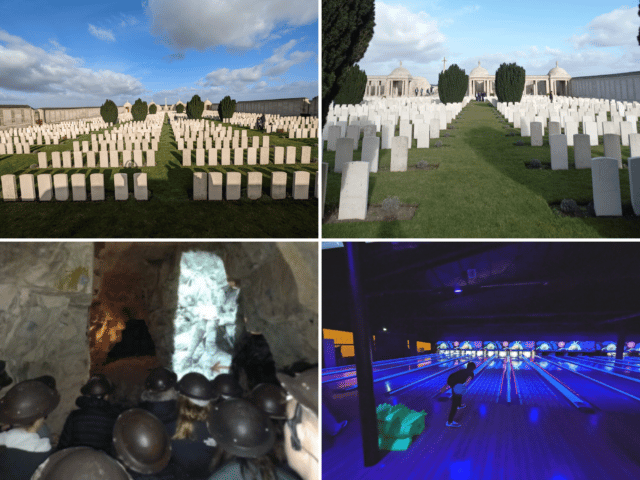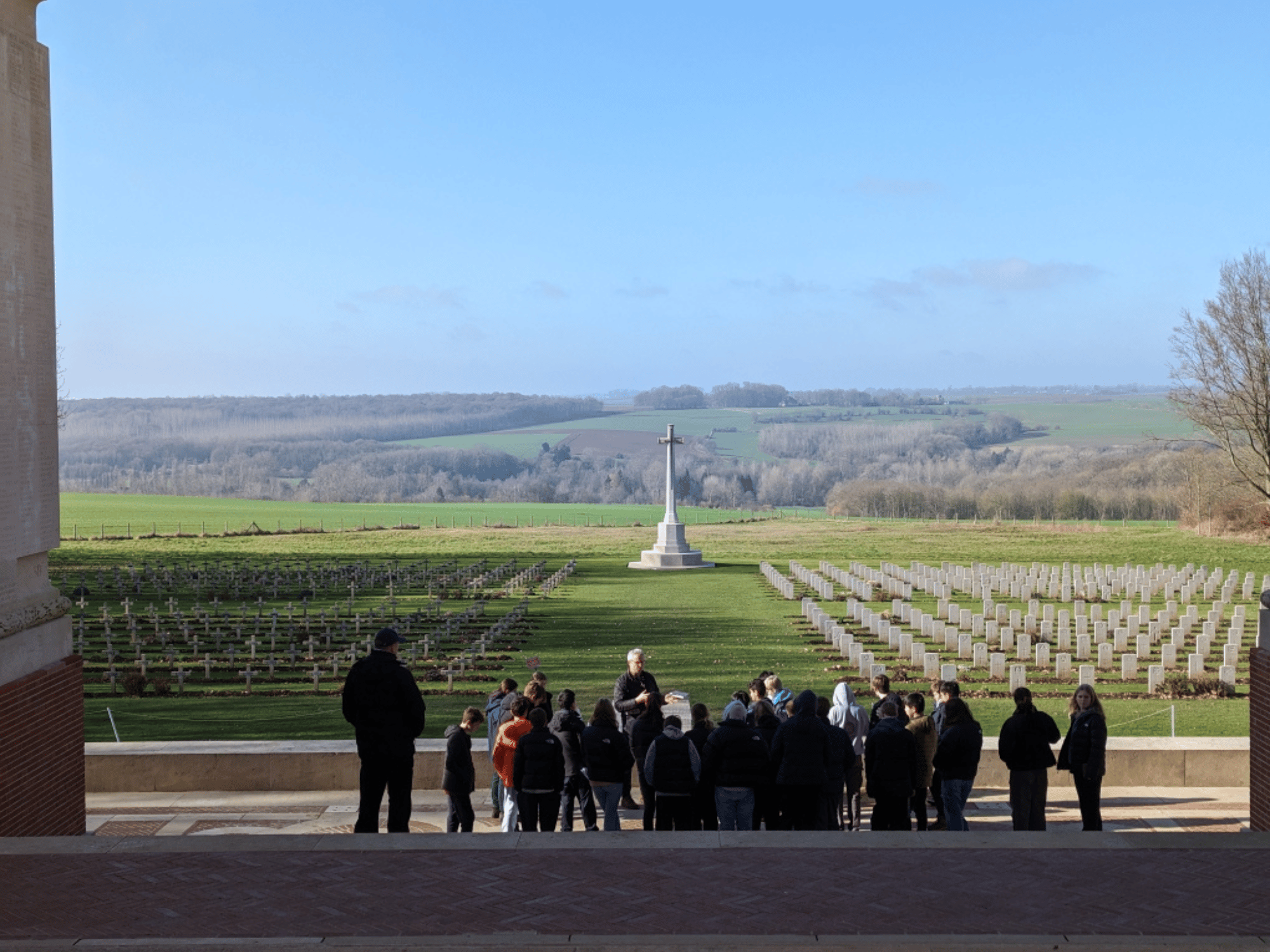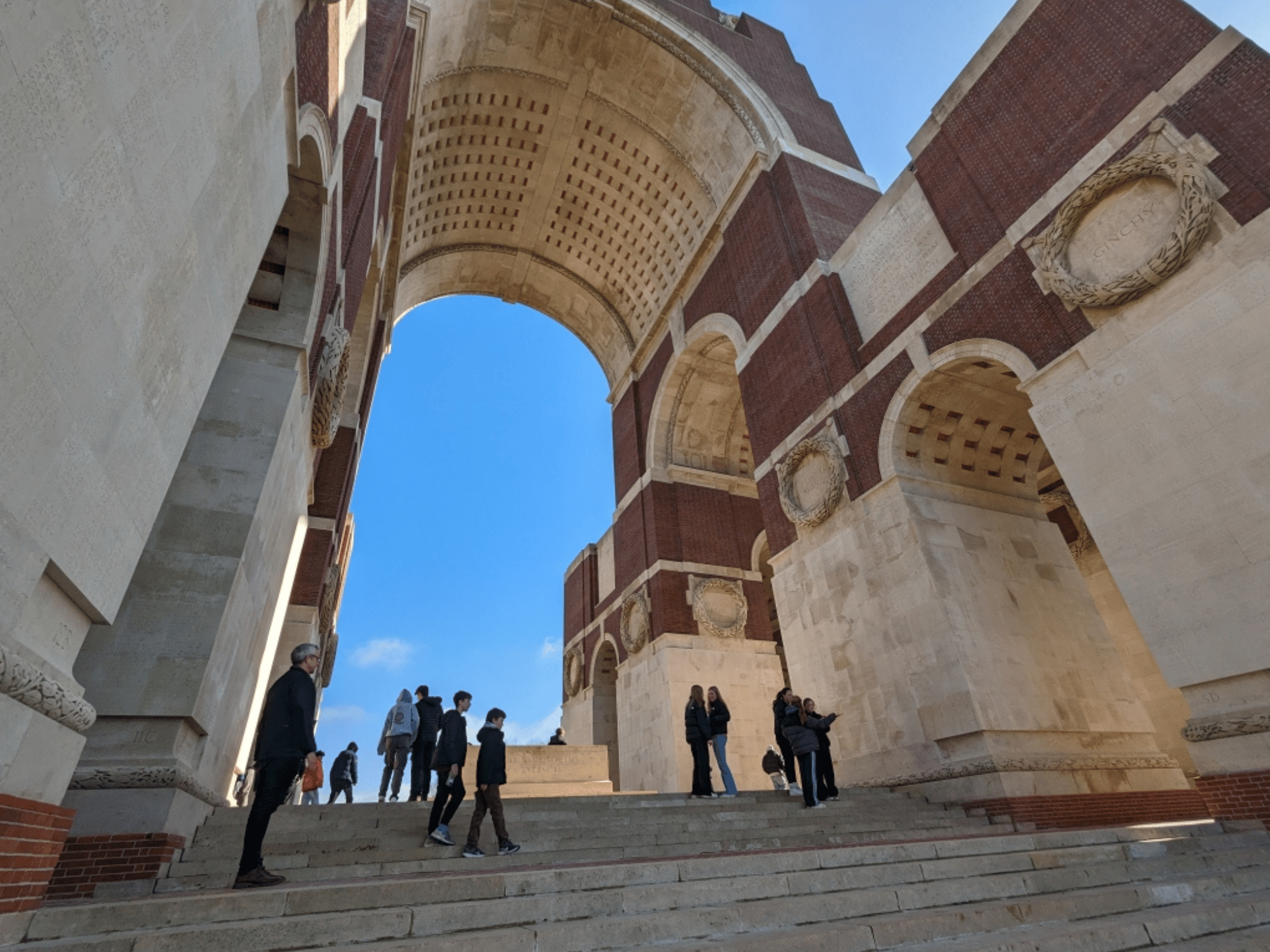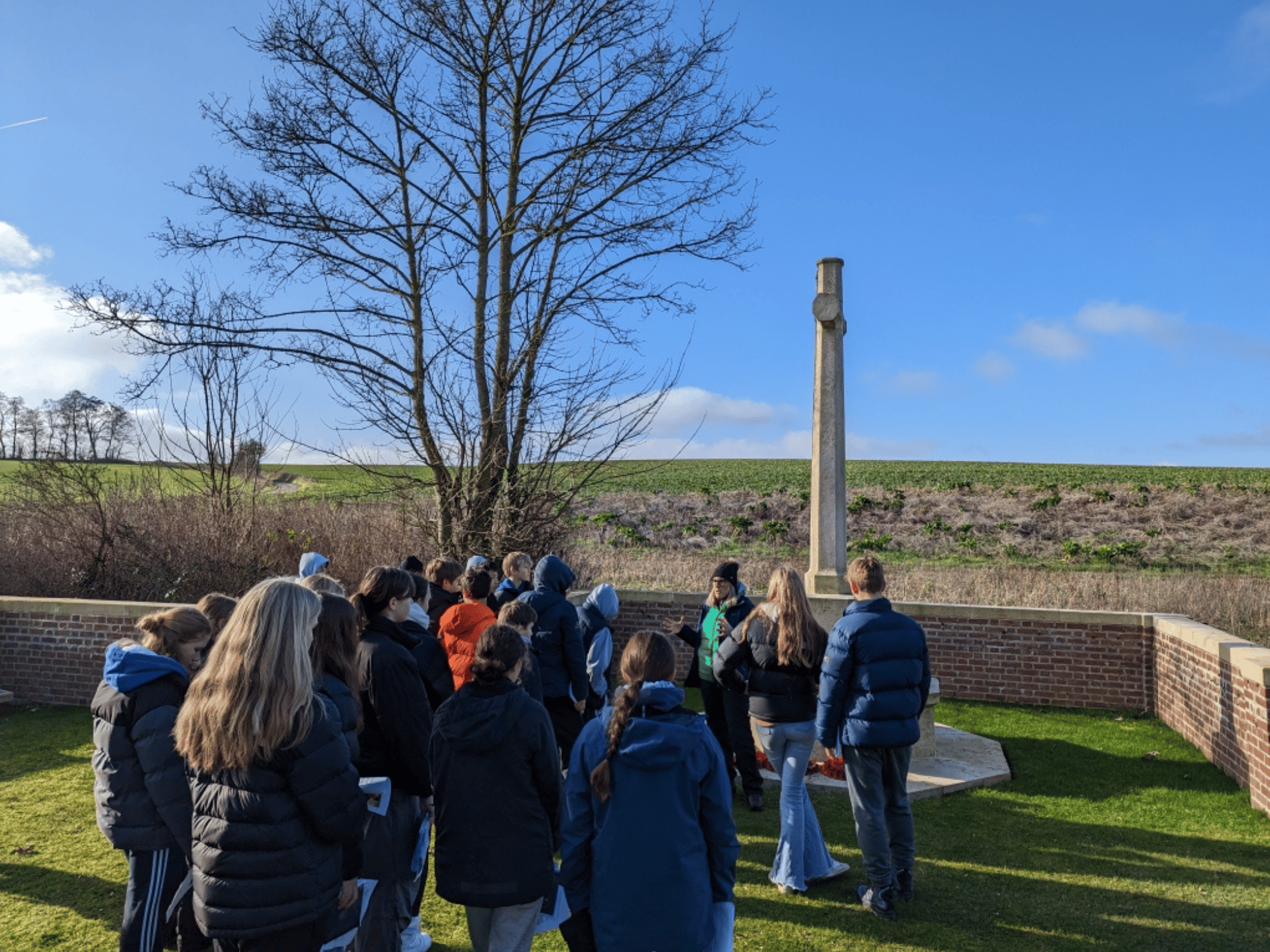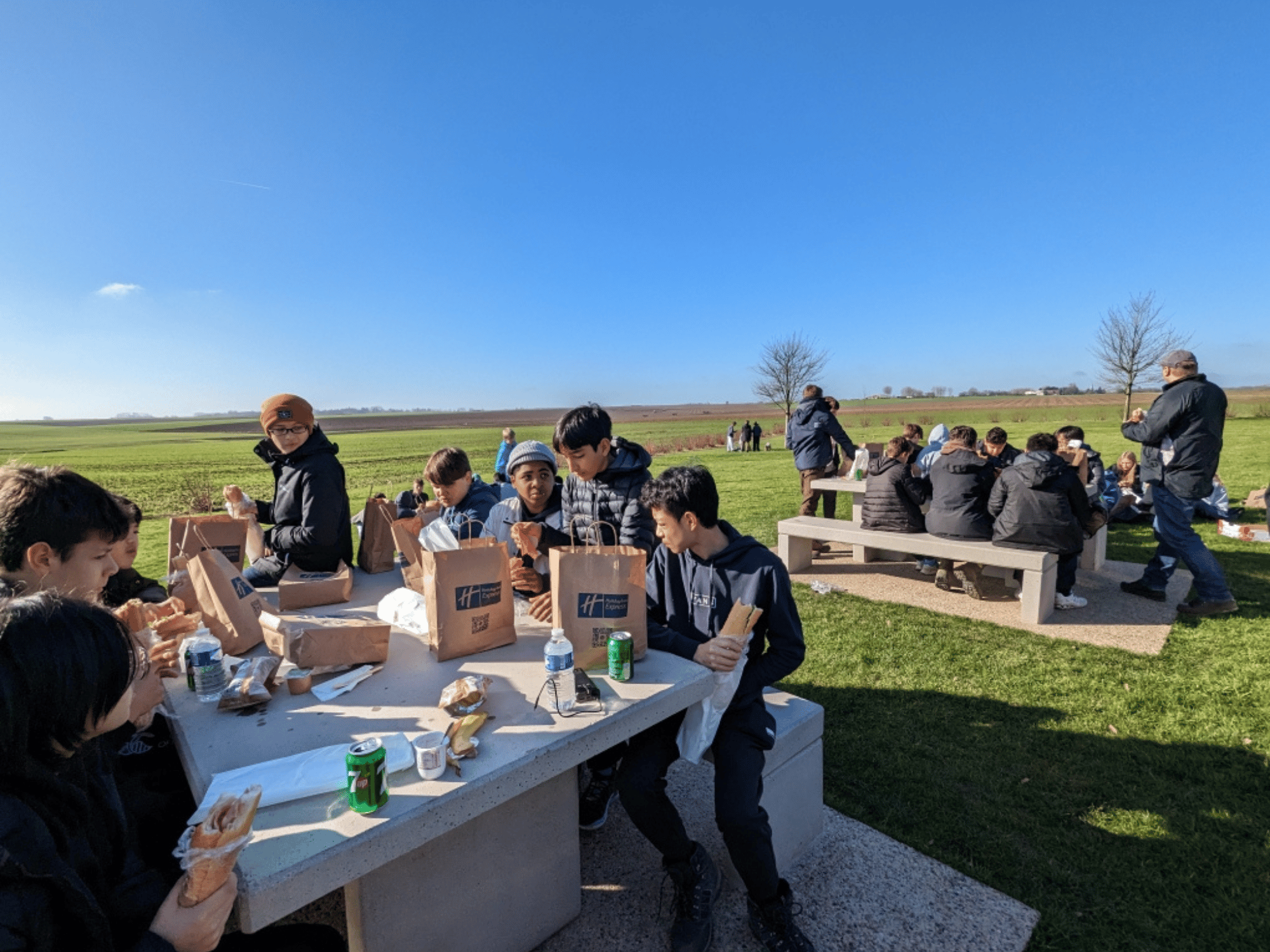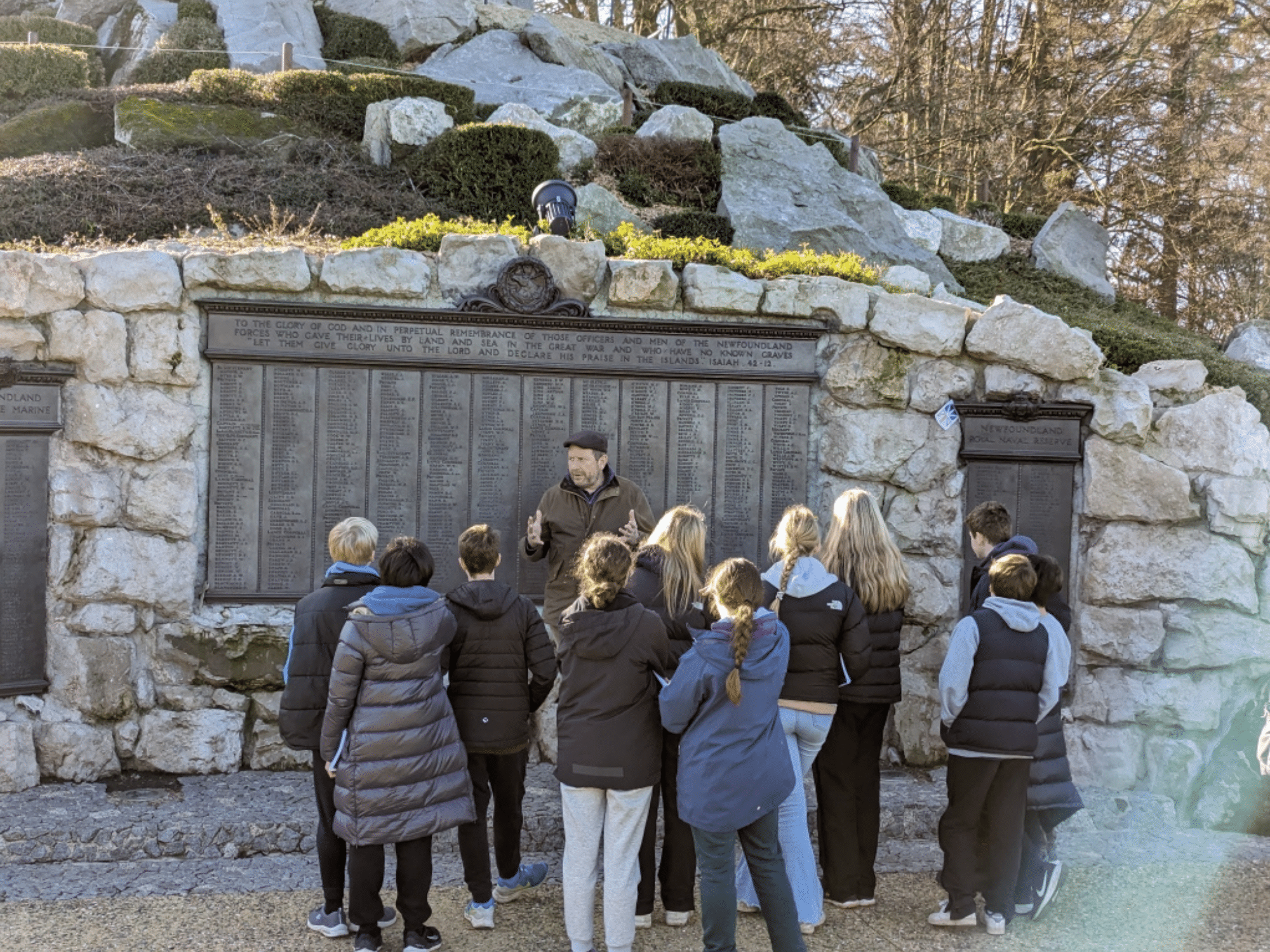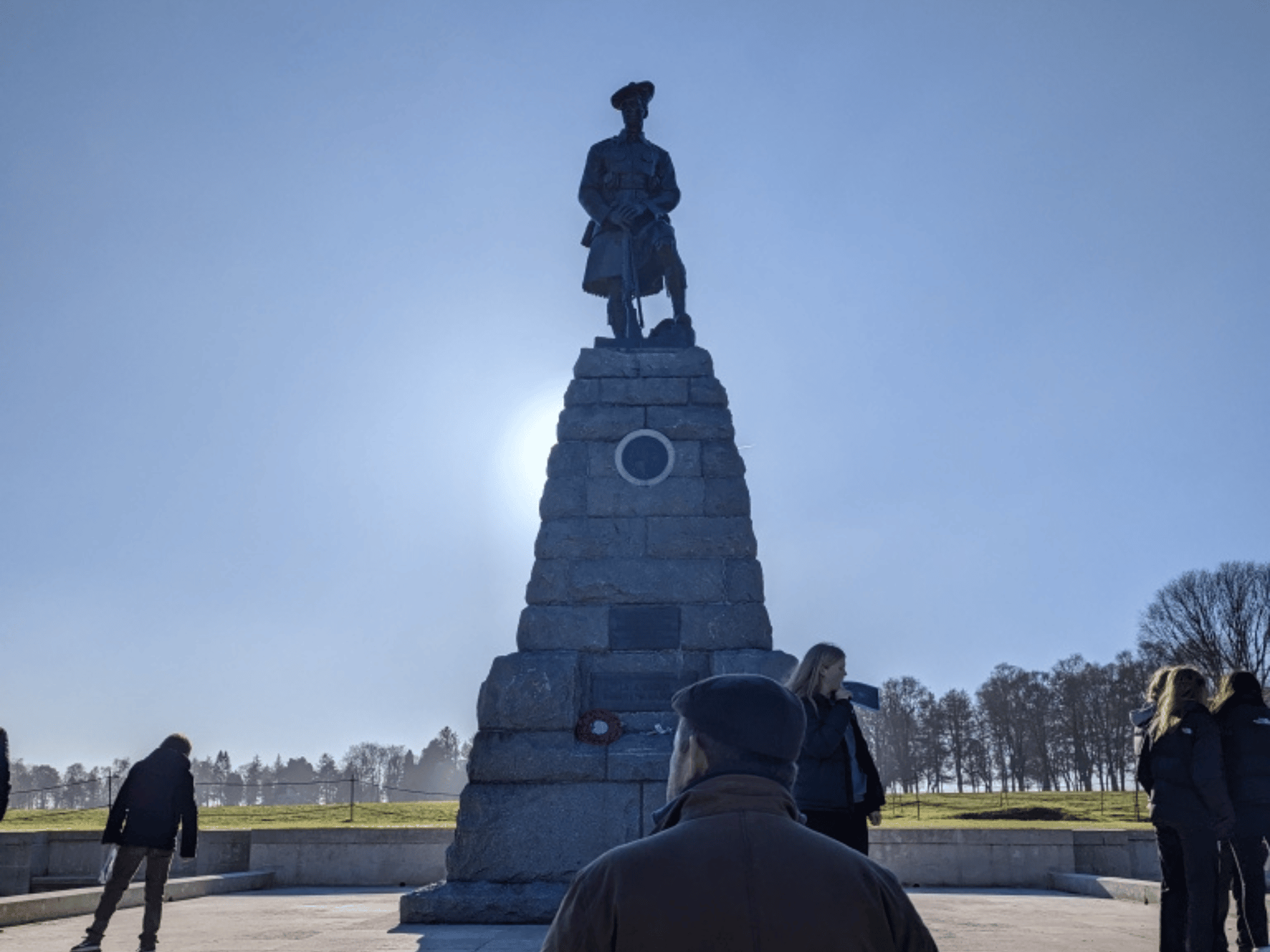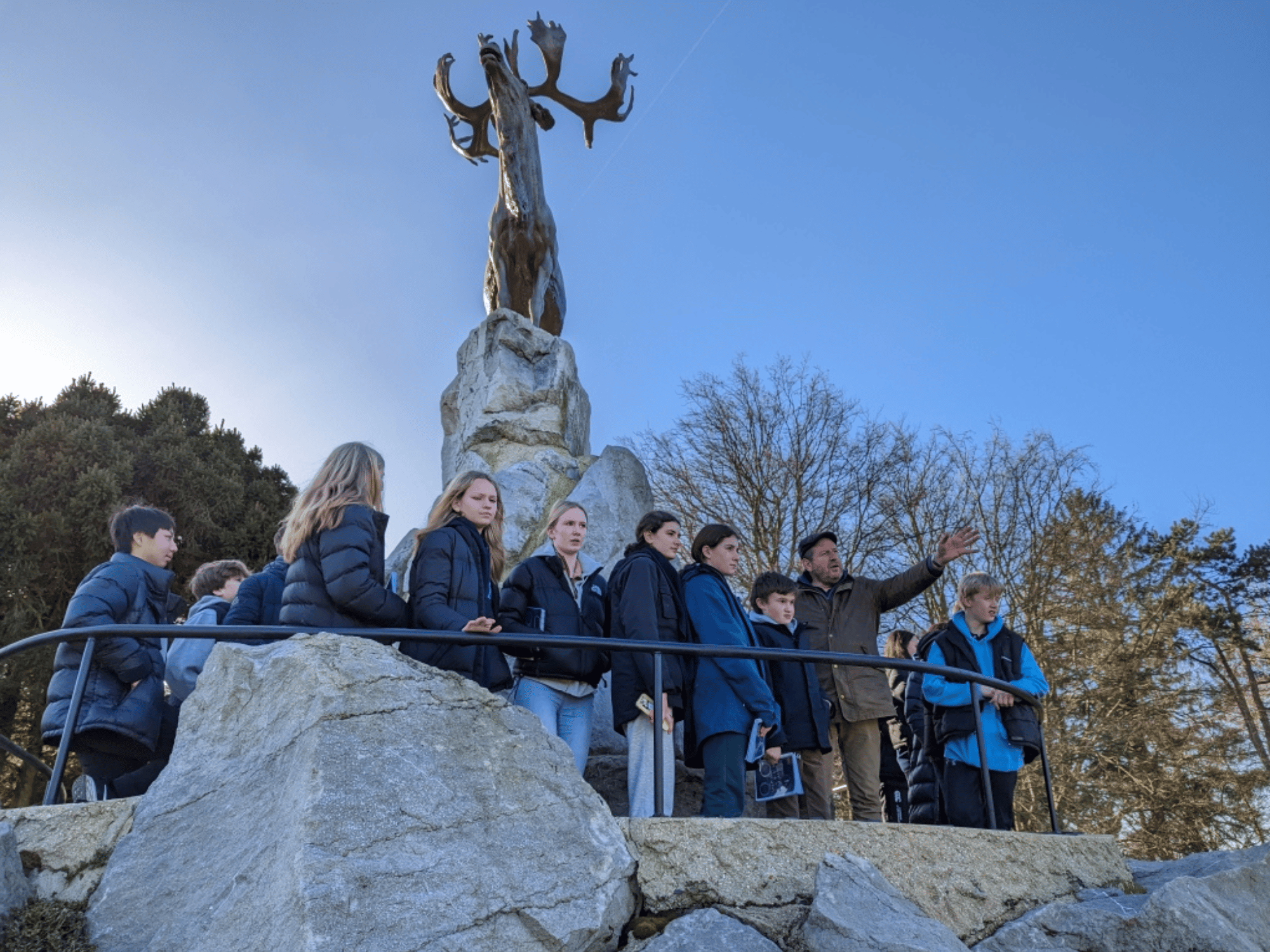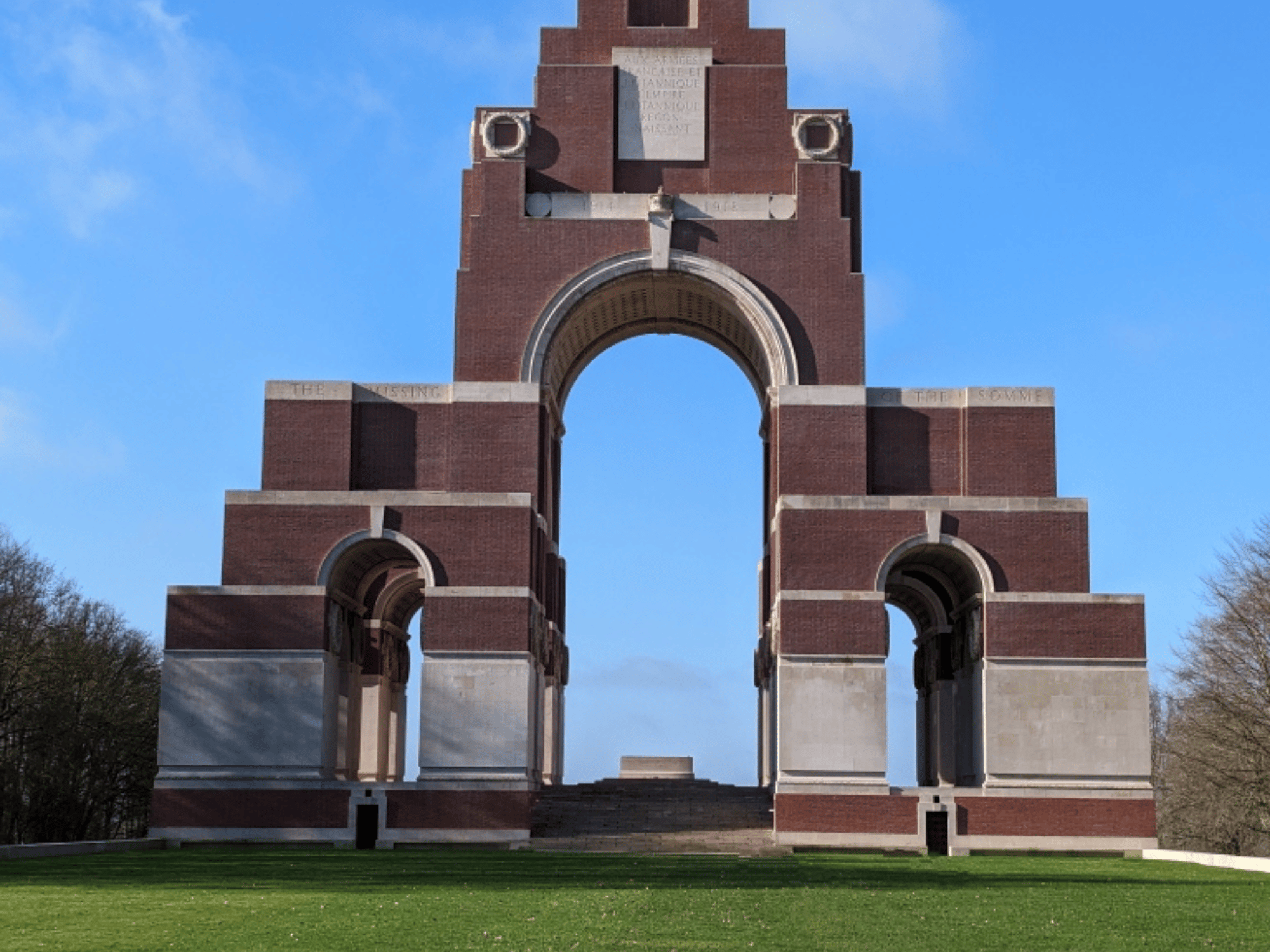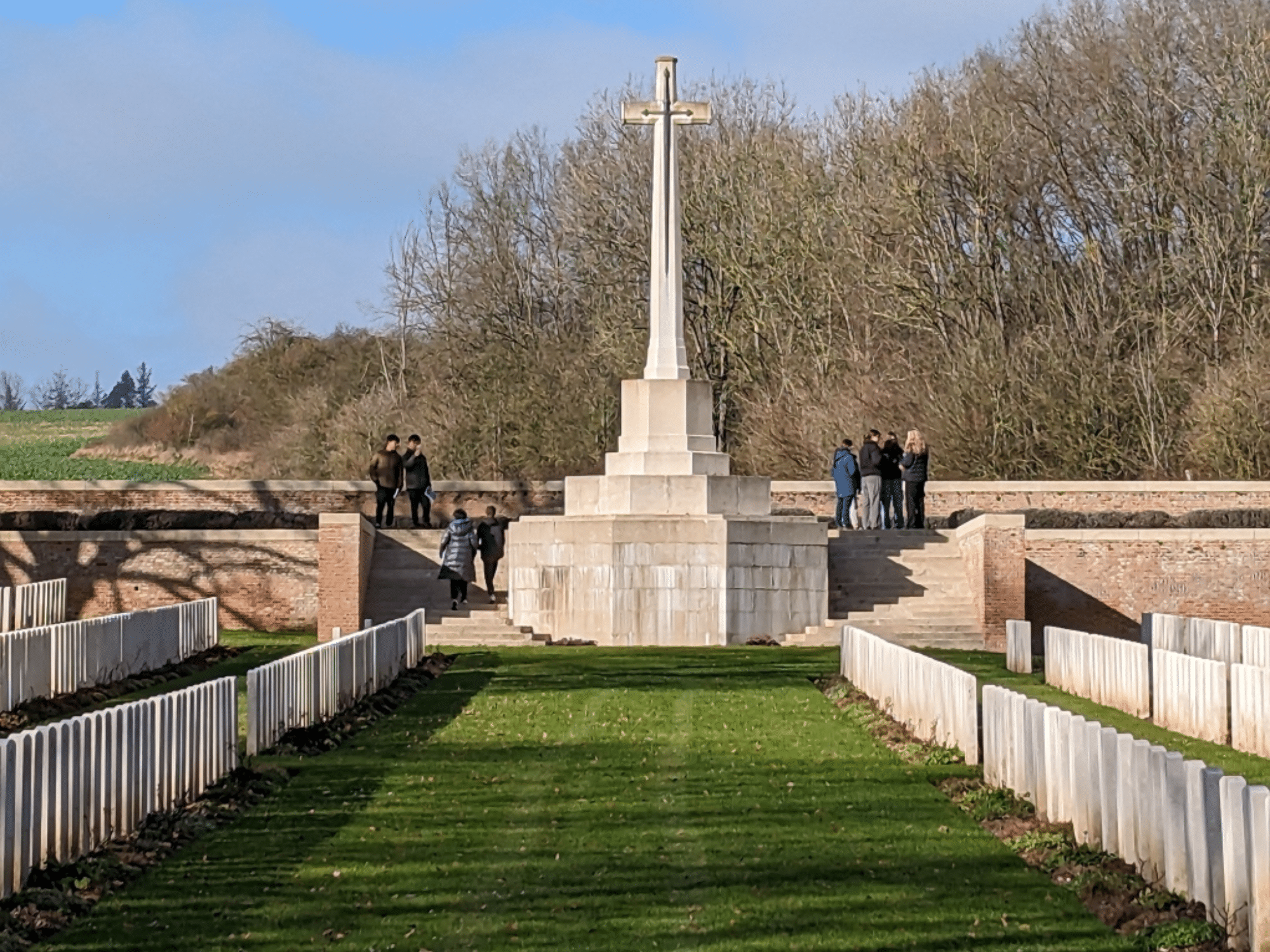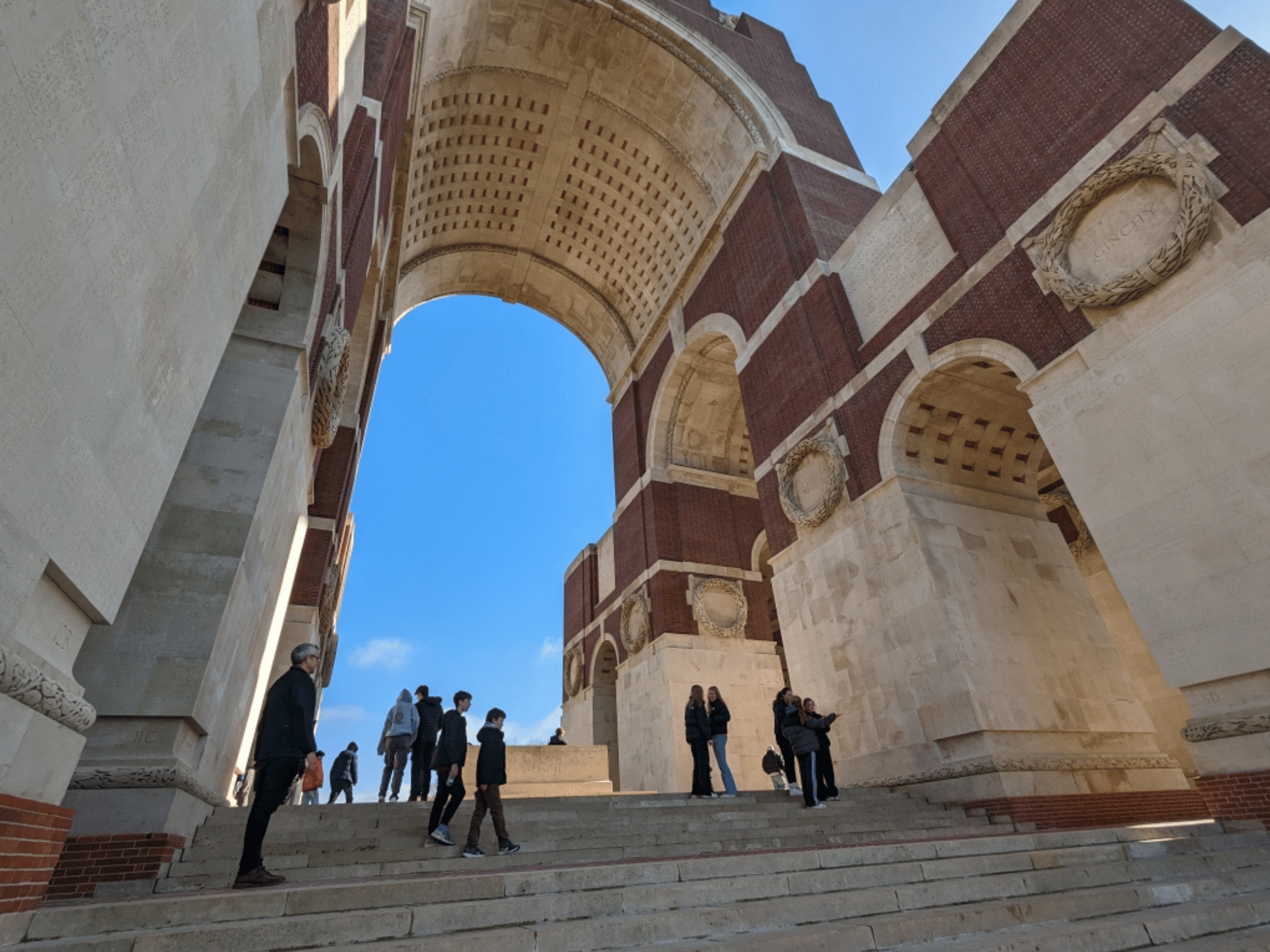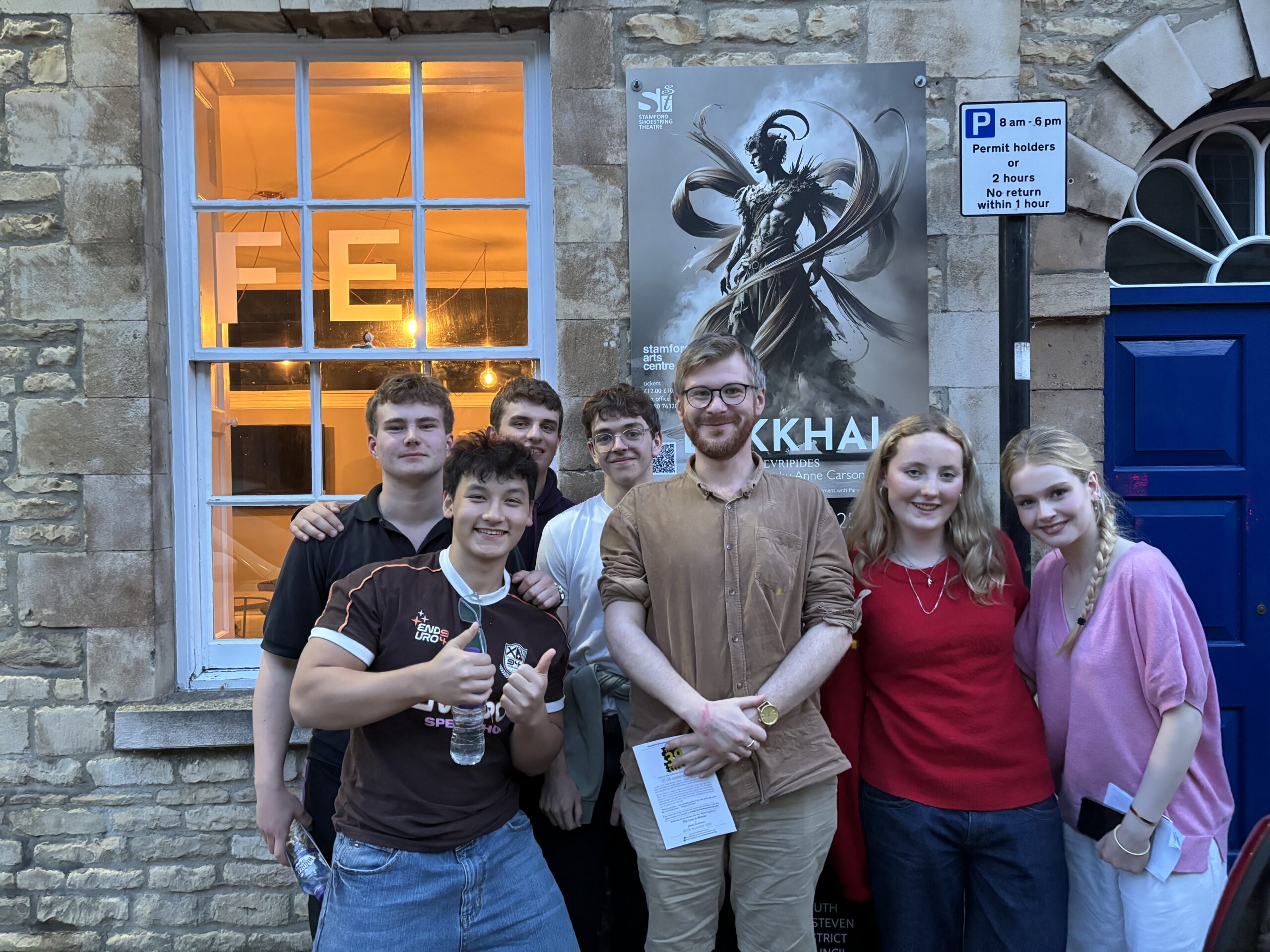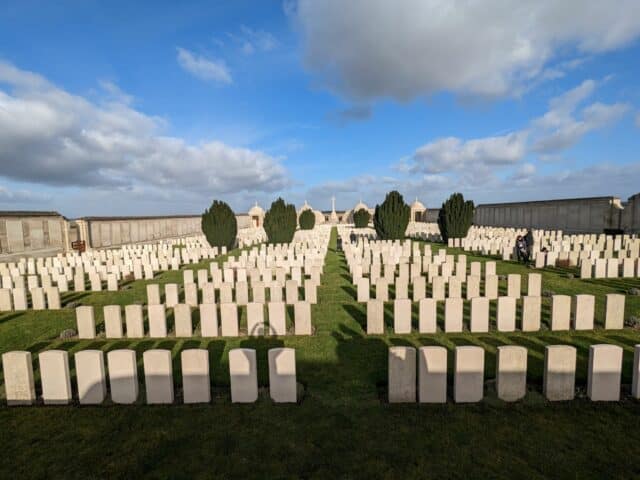
Below are updates from the staff:-
Battlefields Trip 2 Day 3
On the last day of the Battlefields trip, Form 3 visited the German Cemetery of Neuville St Vaast. It provided a striking contrast from the beautifully designed British cemeteries they had visited in the past two days. In their small groups, they tried to describe the differences between all the cemeteries. They were surprised by the sheer size of the German cemetery (4,000 crosses) and the fact that one cross carried up to four names. They were very engaged with the process and asked some relevant questions.
The last visit of the trip was to the Vimy Ridge trenches and memorial. Form 3 learnt of the strategy and bravery of the Canadian Army on 9th April 1917. They had the opportunity to walk in the preserved trenches amongst a ‘lunar’ landscape of shell craters. The Battle of Vimy bears a connection to Oakham School. Old Oakhamian Malcolm Neilson spent a year at School and emigrated to Canada to study agriculture. When the war broke out, he immediately enlisted with other Canadian volunteers and fought at Vimy, where he fell on the first day of the battle. The pupils were then taken to the Memorial, on a high point of the Arras countryside – two white pillars commemorating the alliance between France and Canada.
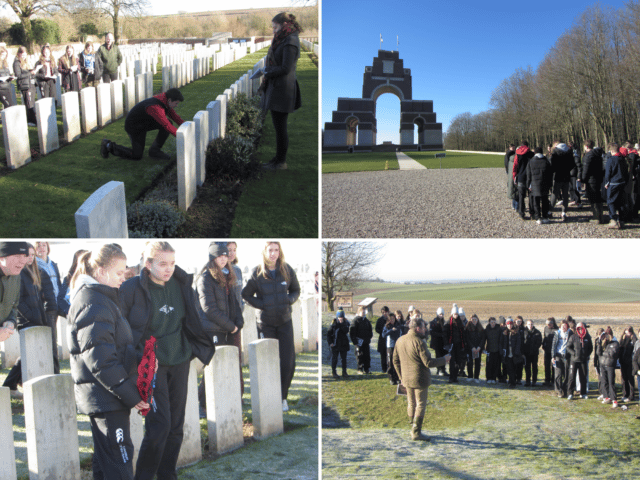
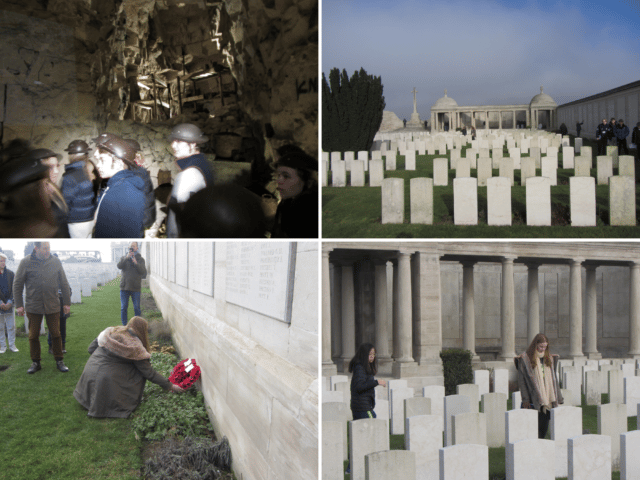
Trip 2 Day 2
On the second day of the Battlefields, Form 3 headed to the Somme. The day started with an unplanned first stop at the Pozieres British Cemetery. Indeed, two of our pupils, Georgia and Nicole, wished to pay their respect to their relative, Corporal Frank Wellsley Edenborough, who fell on 26 July 1916. The girls laid a wreath at Frank’s grave, and our Oakhamians joined them in a minute of silence in his honour.
Then, at La Boiselle, Form 3 learnt about the first day of the Somme. They walked around the Lochnagar crater, 80 meters large, caused by an explosion at 7.25am on 1 July 1916.
The next stop was at the Newfoundland Memorial park. Form 3 had their first experience of the British trench network and no man’s land. They re-lived almost minute by minute the event of the first day of the Somme and the attack led by the Inniskillings and South Wales Borders, followed by the second wave of Newfoundlanders. Walking into no man’s land, they could better understand the crucial advantage provided by the terrain and the reasons for the failure of the attack. From no man’s land, they carried on and reached the German dugouts and their formidable defensive trenches.
Treading into the footsteps of soldiers, Form 3 pupils were taken to Sunken Lane, immortalized in Geoffrey Malins’s footage. They went ‘over the top’, just as the Lancashire Fusiliers had done over a century ago.
The afternoon started with a visit to Thiepval Memorial. Form 3 were tasked with finding the names of six Old Oakhamians remembered on the panels of the memorial, alongside 73,000 other names: John Norman Pickering-Clarke, Alfred Cecil English, George Holbrook Eric Vidler, Basil Vaughan Wood, William Horace Lanstberry Dewhirst and John Paul Bromhead. One of the main aims of the trip is to remember Old Boys who fell in the First World War, and thus our pupils had a memorial service in honour of Jack Dewar at the Ancre Cemetery. Lancelot John Austen ‘Jack’ Dewar spent four years at Oakham School (1911-1915). He played in the First XV from 1912 to 1915 and captained the team in his last term at school. He was also a keen Fives player, Captain of the First XI in 1915, a member of the Debating team, a School prefect and Head Prefect. The last visit of the day was the Devonshire cemetery, a very poignant visit where all but two graves are members of a single battalion. The bodies of the fallen had been brought back to the trench they had defended, near Mametz.
After a long day at the Somme, Form 3 enjoyed an entertaining quiz night back at the hotel.
Group 2 Day 1
A speedy, but chilly, departure in -2 degrees, but there were plenty of warm smiles, and cheery greetings as Group 2 boarded the coaches. Luggage and lunches safely stowed, we set off from Schanshieffs with impeccable timing at 5.15 am. As the lights were dimmed, Form 3 quickly settled into cosy chats, which, for many, became gentle snores as they succumbed to the effects of the dawn wake-up call. Battlefields 2 had begun on Coach B, while coach A became increasingly lively as the sun rose brighter.
After a smooth crossing of the Channel, we switched to ‘Battlefields Mode’: strictly no phones or devices. Instead, we all watched ‘My Boy Jack’, enthralled by the moving story of Rudyard Kipling’s son, who, urged on by his father, joined the army, despite his poor eyesight. Jack was lost at the Battle of Loos, which made for a poignant first stop at Dud Corner Cemetery, where students were eager to spot Jack Kipling’s name in one of the panels dedicated to the missing. As is customary, one of our Form 3 pupils laid a wreath under the panel of the Leicestershire Regiment, where are carved three names that all Old Oakhamians and current pupils will recognize from Remembrance Day: Captain Edward Langdale MC, Second Lieutenant Basil Mogridge and Sergeant Edward Franks. Those three soldiers fell on 13 October 1915 at the Battle of Loos on the same day as two other OOs, Lieutenant Gordon Sanderson and Captain William Johnson.
Then it was on to the Wellington Quarry for a fascinating peek into a subterranean network of tunnels used to in the Battle of Arras. Equipped with safety helmets and audio devices, they descended 20 meters underground through an old mine shaft. There, they followed the steps of the New Zealander miners and engineers who transformed old medieval quarry tunnels into temporary shelters. For a week leading to the 9 April 1917, the British, Scottish and New Zealanders were waiting for the 5.30am signal to climb up the tunnels and attack the German trench as close as 12 meters ahead.
The day ended for Form 3 with supper in a French restaurant, followed by a bowling evening where everyone, including some of the teachers, enjoys 10 rounds of friendly competition.
Group 1 Day 2
Day 2
With many a thought given to the devastation that the Somme had on small communities felt from the loss of the ‘Pals Battalions we started the day’s visit at the Lochnagar crater at La Boiselle. At 90 ft deep 300 feet across the result of the largest man-made explosion until the use of nuclear weapons in the second world war. This enormous detonation obliterated between 300 ft of German dugouts catastrophically full of German troops. A significant moment at the beginning of the battle of the Somme, which is known for its introduction of tank warfare but also famous for the extraordinary loss of so many soldiers on the first day and those of several other nationalities over the course of nearly five months.
The morning comprised two moving visits to the magnificent Thiepval Memorial and the graveyard of the Devonshires. One pupil was able to identify their great-grandfather of the same surname in this cemetery, a soldier who is much talked of within their family. While all pupils have spent a good deal of the trip considering their connection to OOs who gave so much in this conflict, it is perhaps most moving that pupils are able to see their lineage in the remarkable cemeteries.
After lunch, we visited the inspiring Newfoundland memorial, where Mr Roberts explained much of the tactics used on this part of the Somme battlefield and the enormous impact of the Canadian forces on the battle but also their loss back home in Newfoundland. These volunteers from a small community were liked by the local French for their manners and love of the countryside. Sadly, the significant majority lost their lives when they went over the top. Their contribution is recognised with this significant memorial, symbolised by the beautiful caribou statue.
Group 1 Day 1
The boys and girls have had a very thought-provoking day. We departed well and enjoyed sunny weather as we made our way to the Loos memorial and the Dud Corner cemetery. The pupils listened to Head of History, James Roberts, speak sympathetically and sincerely about them. We then all went to look for the various Oakhamians that fought and sadly lost their lives at Loos. They are among only 20% of soldiers to have died at the battle whose graves are marked with their names. Pupils also made considerable effort to look for those two soldiers who received the Victoria cross at this battle.
Once we had finished at the Loos Memorial, we moved over to the Wellington quarry, where we walked through tunnels and listened to the experiences of the British Empire forces from all over the globe, but especially those soldiers from New Zealand who tunnelled 20 km. Here it was possible to feel a little of what the soldiers must have done in the cramped and dark conditions. We learnt about the many stories of the people coming together and the positivity that ensued that acted as equal inspiration.
Finally, we headed back to the hotel and had a very nice meal of steak hache and frites. Then we went bowling, where there was some really quite intensive competition, including a very high score of 122 by Ryan! At the end of the day, we were all tired after the early start, but are looking forward to our trip to the Somme on Monday.
